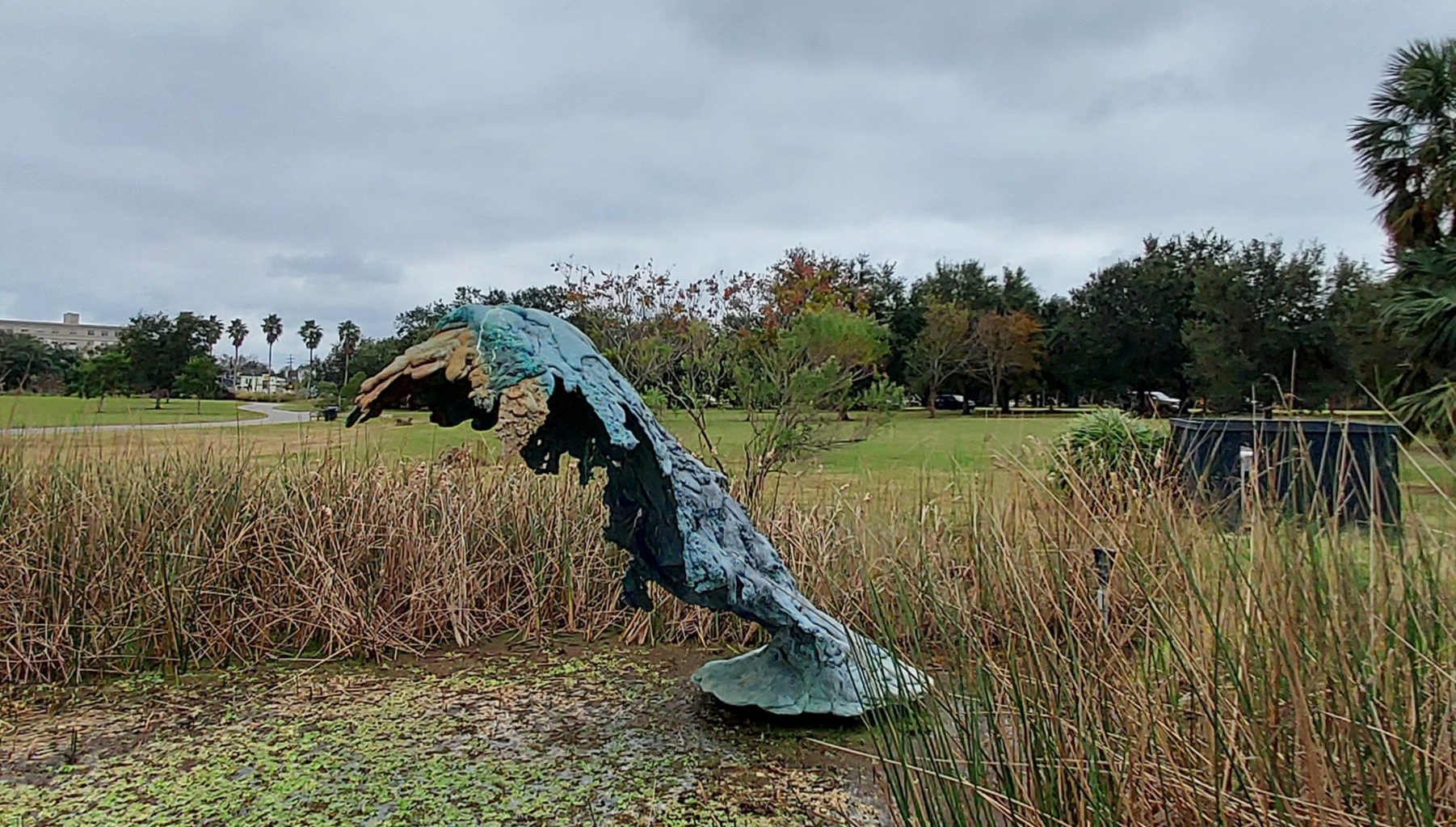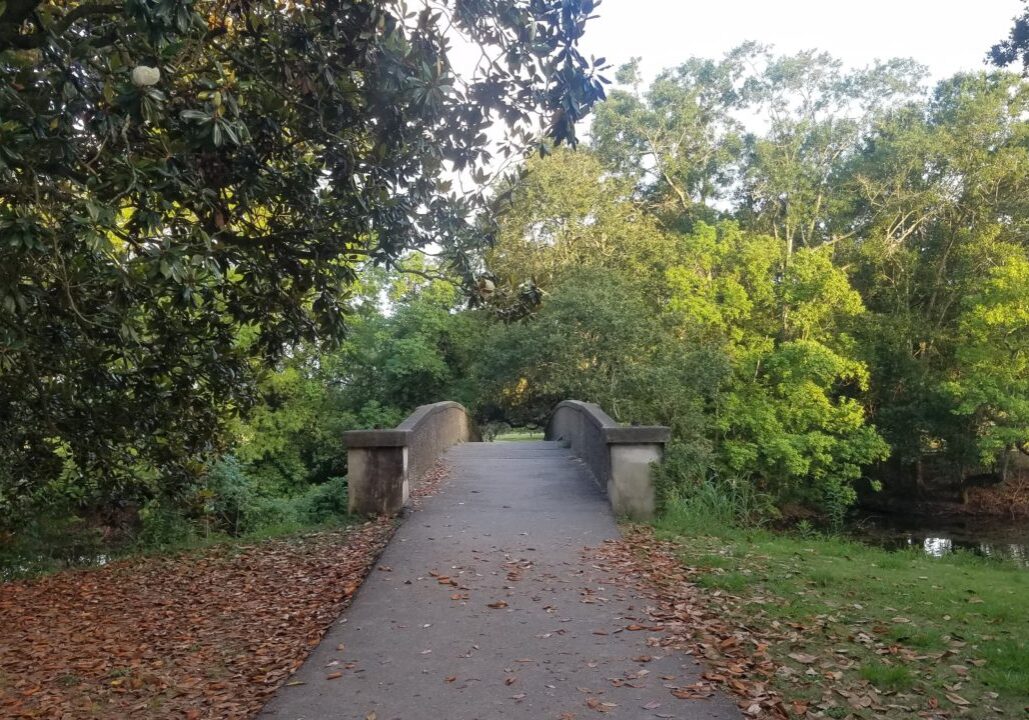There was a time when hosting a World’s Fair was a very big deal. Tourists would travel from across the globe to your city to learn about different cultures and experience the height of technology. New Orleans hosted its first World’s Fair in 1884, which I wrote about, highlighting where you can still find remnants of the event.
Exactly one hundred years later, the Crescent City hosted a second fair: the 1984 Louisiana World Exposition. It’s theme was “The World of Rivers — Fresh Waters as a Source of Life.”
By many measures, it was not a success. Globalization had made it possible to connect to the rest of the world from your home, and Disney created a permanent World’s Fair of sorts with EPCOT. Our exposition competed with the 1984 Summer Olympics in Los Angeles and took place just two years after Knoxville’s own World’s Fair.
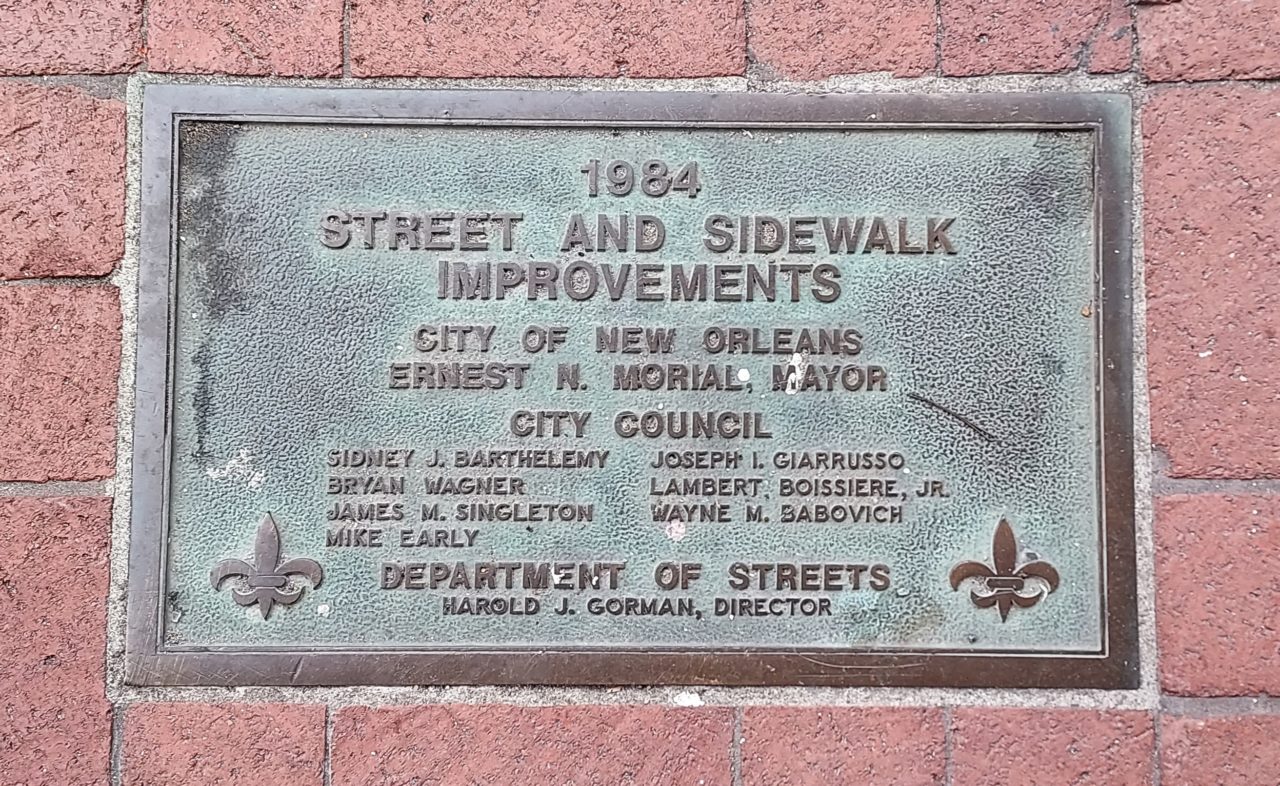
The New Orleans celebration attracted 7.3 million visitors during its six-month run, which sounds like a lot, but is less than two-thirds of the projected attendance. It was the only World’s Fair to declare bankruptcy during its run and it was the last such event held in the United States.
Still, it would be dubious to call the 1984 Exposition a total failure. Not only did it provide cherished memories for a generation of New Orleanians, but it also helped transform our city. Some evidence of that transformation and the Fair can still be seen today. This article will guide you through how to find those relics — many still in plain sight around town.
Revitalization
Today, New Orleans’ Warehouse District is lively and full of art galleries, restaurants, bars and clubs. Prior to the World’s Fair, however, these were trash strewn streets in disrepair surrounded by old, decaying warehouses.
Fulton Street is one of the most noteworthy examples of that transformation. By all accounts, this was not a street one would hang out on in advance of the mid-1980s. Many of the neighborhood’s streets were repaired leading up to the approximately 84-acre fair, however, and the newly-created Fulton Street Mall was billed as the center of World’s Fair nightlife. The positive results of that investment can still be seen today, though the fun has shifted a few blocks downriver toward Poydras. Residents and tourists still enjoy the pedestrian-friendly Fulton Alley featuring Harrah’s Casino, Manning’s sports bar, Ernst Cafe, bars, a bowling alley and more.
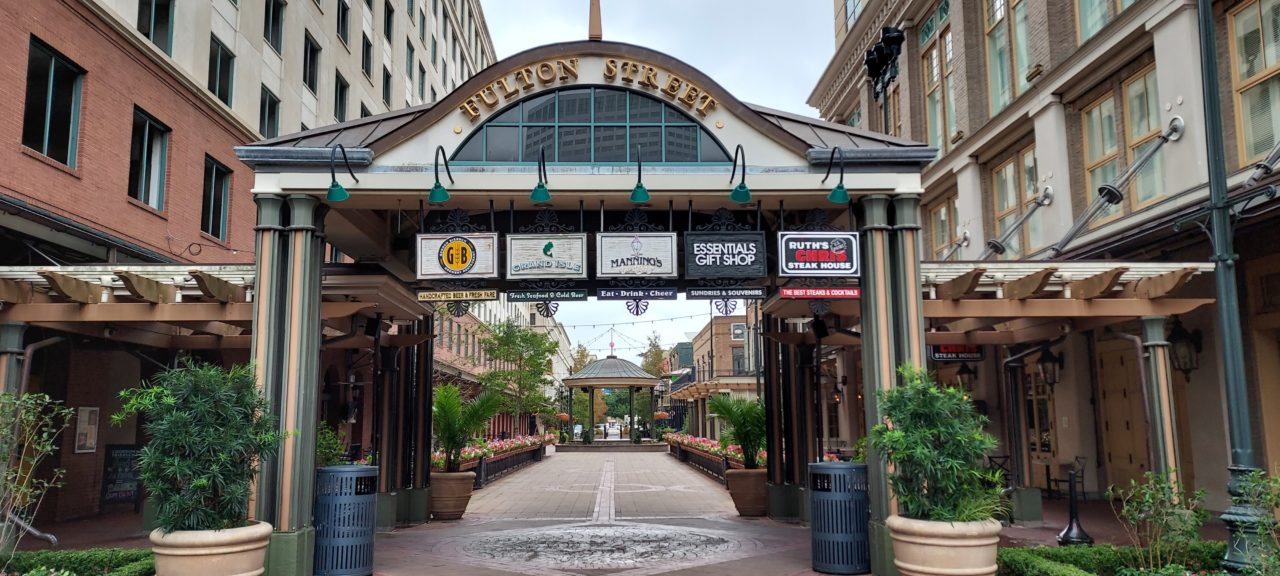
Several of the buildings and sites built and revitalized for the World’s Fair remain in use today. The Festival Park area of the fair was anchored by the Federal Fibre Mills building, which housed a German beer garden and Jed’s Lookout over the Mississippi River. Today, the building is the Federal Fibre Mills Condominiums.
World’s fairs feature pavilions hosted by countries from around the world. The current Hyatt Place Hotel, for example, is on the site of the Vatican City Pavilion. Similarly, the New Orleans Pavilion is occupied by the Omni Riverfront Hotel. Most of the international pavilions, however, were along a section of the fair called the International Waterfront. After the event, those pavilions were redeveloped into their current use, and one of the exposition’s most enduring remnants: the Riverwalk Mall.
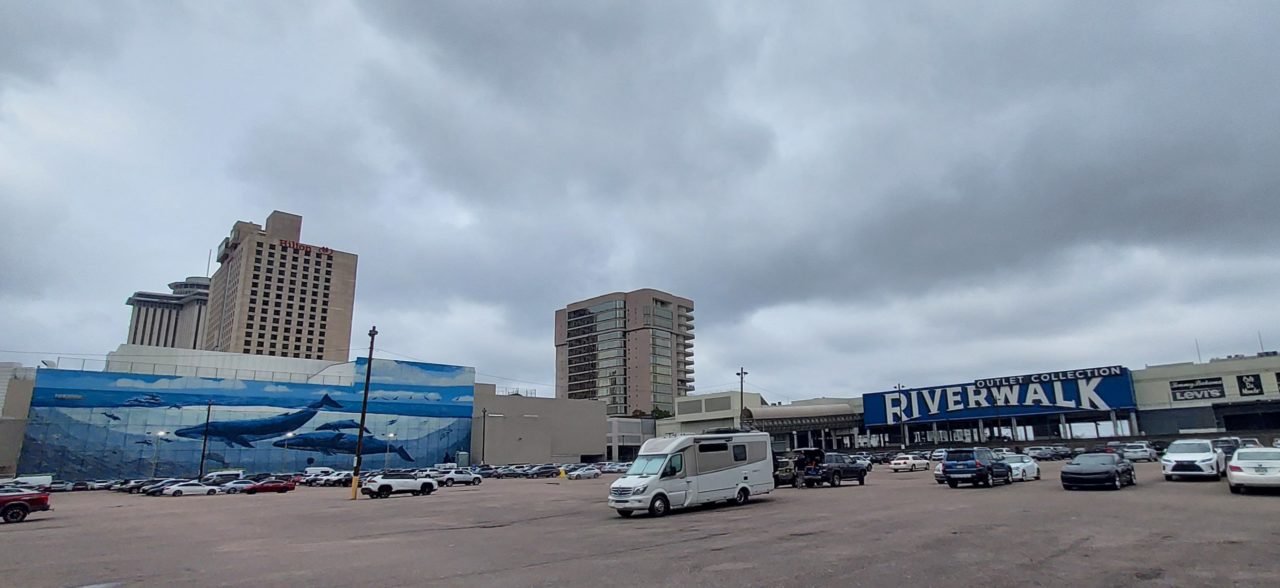
Even parking lots carry history. What we know today as “The Whale Lot,” named because of the undersea mural created by artist Robert Wyland after the Fair closed, was once the centrally located Centennial Plaza. The plaza sat just inside the main City Gate entrance to the Fair and featured an aquarium, petroleum-related demonstration, gondola and monorail stations, live old-timey music, and more. Perhaps most amazing was the view: if you stood at a certain location in the plaza, the World’s Fair’s buildings would align to look like the main hall from the 1884 Exposition.
Convention Center
For years before the World’s Fair, city officials talked about building a convention center. The 1984 event provided the catalyst.
What is now Halls A, B and C of the Ernest N. Morial Convention Center started as the 300,000-square-foot Great Hall, an air-conditioned indoor facility that was home to many of the fair’s state and corporate exhibits. Most popular among them was the Louisiana exhibit, featuring an indoor Disney-esque boat ride.
Even today, a section of the convention center is known as The Great Hall.
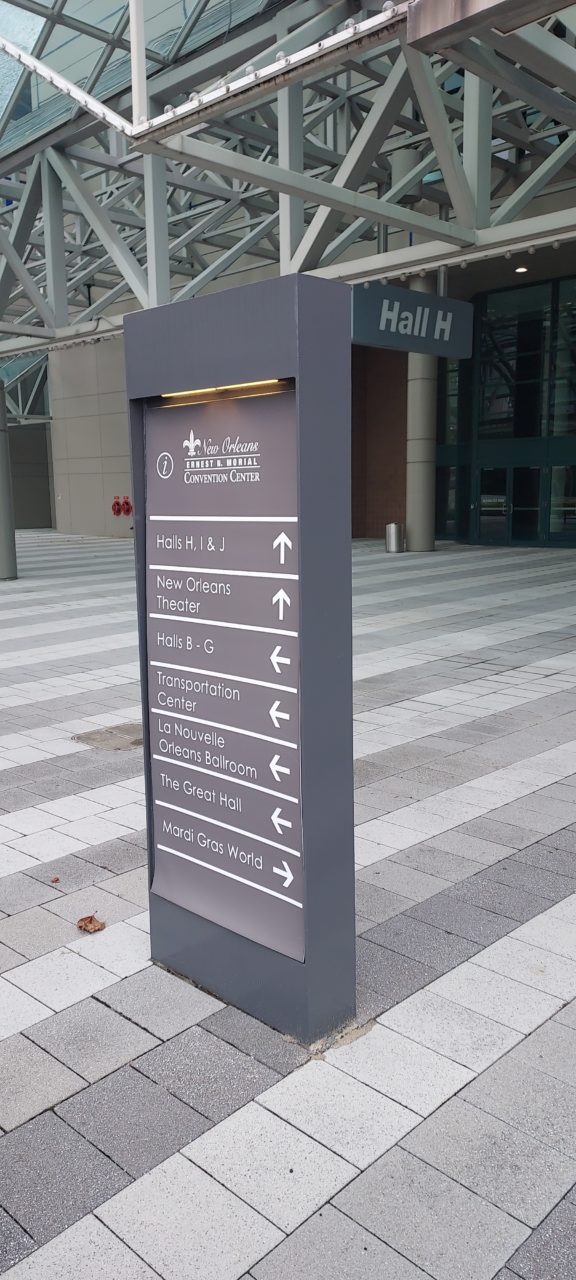
That convention center has expanded repeatedly since 1984. What was once the fair’s Bayou Plaza neighborhood (the Fair featured six “neighborhoods” in total) with water-centric attractions like the Kid Wash and Aquacade is now Halls D, E and F of today’s convention center.
Neptune and the Alligator
There were two public entrances to the 1984 World’s Fair. The City Gate, surrounded by a buxom pair of topless mermaids, received a lot of attention. It was the other gate, however — the Bridge Gate — that boasts the more enduring legacy.
The Bridge Gate was located on what is now Convention Center Boulevard in the shadow of the Crescent City Connection bridge. Sculptures also surrounded this gate — oversized alligators, a more modest mermaid, and King Neptune, the god of water. These pieces of art were created by artist Blaine Kern of Kern Studios, a company that has created Mardi Gras floats for nearly 90 years.
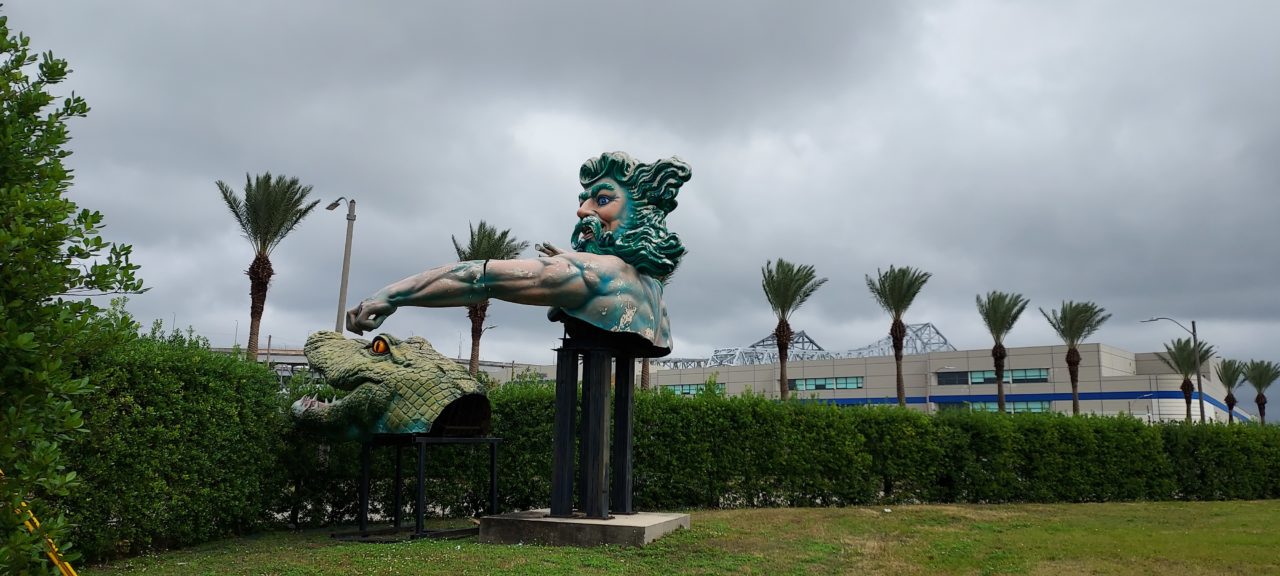
Today, you can still find two of the Bridge gate’s sculptures. The head of the alligator and a trident-less Neptune sit on the corner of Tchoupitoulas and Henderson streets. They point the way to Blaine Kern’s Mardi Gras World.
Gondola
One of the fair’s most popular attractions was the Mississippi Aerial River Transit. This ride was a gondola lift that took fairgoers on the 2,200 foot journey from the Warehouse District across to a small number of attractions on the West Bank (and back).
Of course, that meant gondolas traversed the Mississippi River at almost 350 feet in the air. By most accounts this was a terrifying journey, particular on a windy day. In fact, it was considered one of the two best thrill rides in the U.S. (sharing space on the list with Disney’s Space Mountain). Adding to the thrill, the more than 50 individual gondola cars were notorious for getting stuck, leaving poor riders dangling over one of the world’s biggest rivers until it could be fixed.
(Take a look at the 1985 film, French Quarter Undercover to see the gondolas in action!)
More than 1.7 million riders enjoyed (or at least took) the memorable trip. After the fair, the idea was to keep MART as alternative transportation across the river to the bridge or ferries, but ridership was low and the gondolas shut down for good in April 1985. There were plans to reopen the system, but they never materialized and the gondolas were auctioned off in 1989.
These prizes can be found in private residences (and even hunting cabins) far from New Orleans, but at least one still remains close by. Gondola #26 can be found — still largely intact — outside Nesbit’s Poeyfarre Street Market on Poeyfarre Street between Annunciation and Constance streets.
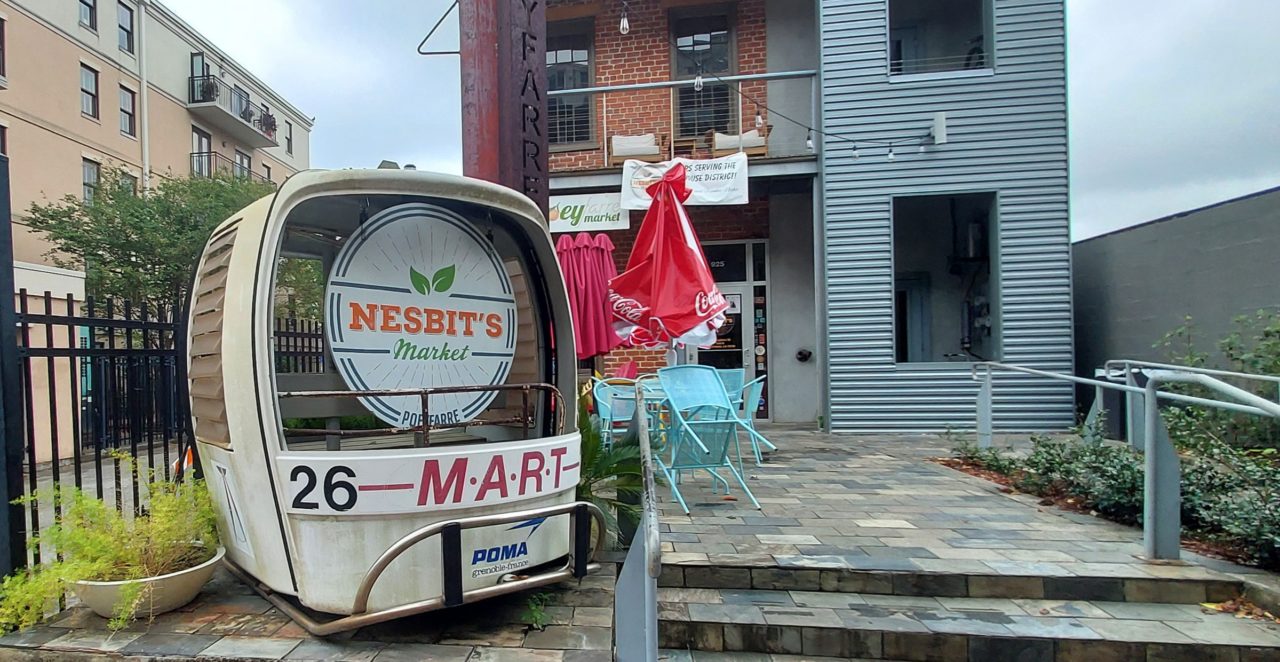
Wonderwall
Running nearly the entire length of Convention Center Boulevard was the Wonderwall, designed by noted architect Charles Willard Moore and his partner William Turnbull.
The wall served the purpose of camouflaging ugly, high-tension power lines along the street, but it ended up being a memorable highlight for fairgoers. One writer described it as “the Great Wall of China, a la Harpo Marx,” the Wonderwall was a half-mile-long smattering of bombastic sculptures, scaffolding, architectural forms, and landscaping.
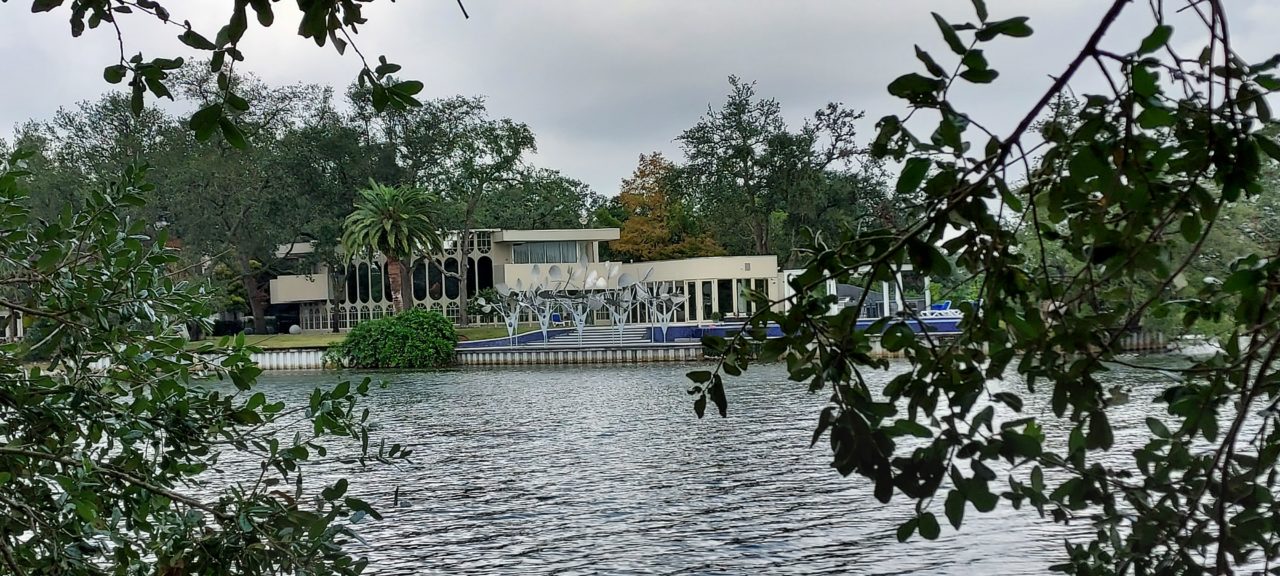
Like many of the fair’s attractions, the wall was disassembled and sold following the event’s closing, though some evidence still can be found around town. Several of the Wonderwall’s silver leaf sculptures are in the waterfront-facing backyard of a resident living on Demourelles Island along Bayou St. John.
Monorail
The fair’s 1.5-mile monorail zipped through five of the fair’s six “neighborhoods” on an elevated track, even passing directly through several pavilions. A complete circuit took 12 minutes, so the monorail was a great way for fairgoers to get their bearings before jumping into the celebration by foot.
The long-term plan for this $15 Million transit addition was to provide improved public transportation through sections of the CBD. After the fair went bankrupt, however, the monorail was sold to the Miami Zoo, where it’s still in use today.
Public Art
Winners of an international art competition based on the fair’s water theme were scattered throughout the exposition. Several of those still exist in New Orleans today.
One of the first many attendees would have seen was a gigantic head on its side with water leaking from its eyes. The work of art, called “Crying Head,” was designed by Claude and Francois-Xavier Lalanne and can be found today on the Elk Place neutral ground between Tulane Avenue and Canal Street.
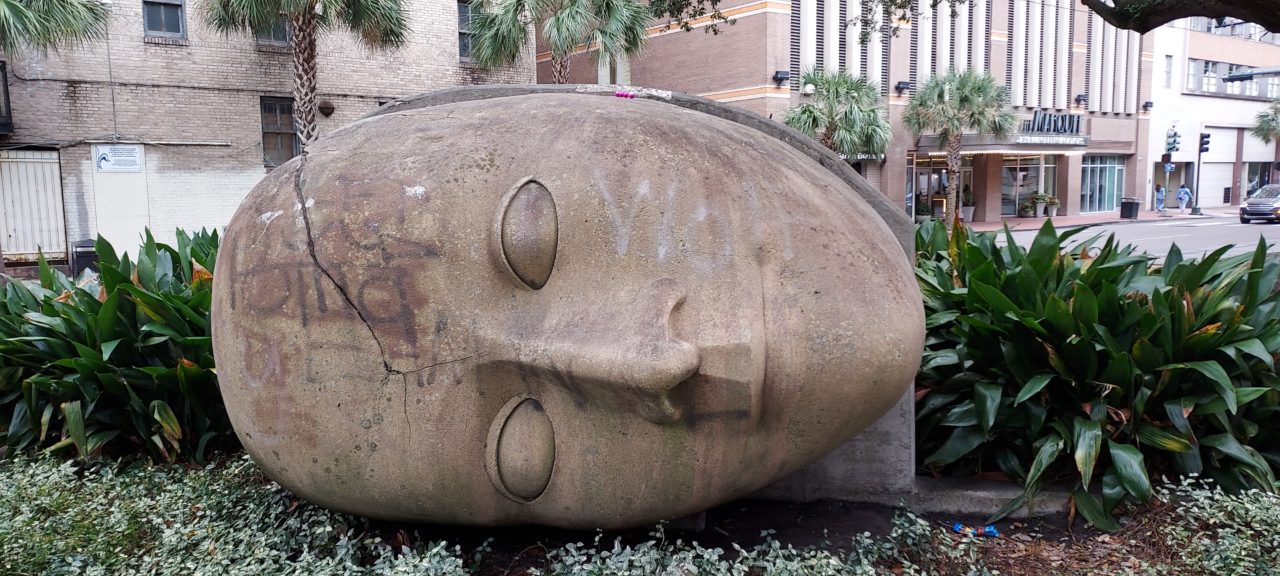
Another work of art at the festival was “The Wave of the World,” by Lynda Benglis. Located near “Crying Head,” a series of mix-ups after the fair closed resulted in this award-winning sculpture sitting in storage in Kenner’s former sewerage treatment plant. After the immense value of the piece was realized, it was restored and is now on loan along Big Lake in City Park near the Esplanade Avenue entrance to the park.
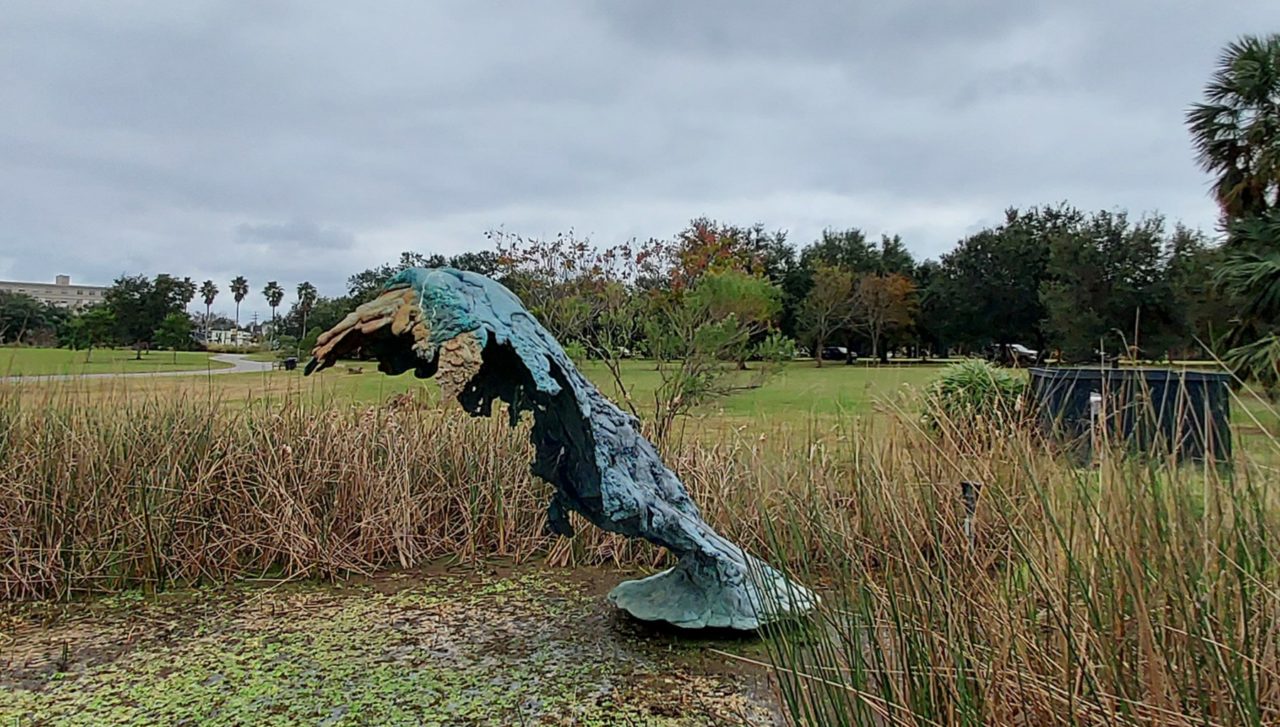
Food
It’s hard to believe, but there was a time when crawfish was rarely eaten outside the bayous of Cajun Country. Due to new harvesting methods, the now-popular-mudbug made inroads in New Orleans just in time for the World’s Fair. That in combination with the rise of Paul Prudhomme and his new book, Chef Paul Prudhomme’s Louisiana Kitchen gave food writers at the fair lots to talk about.
They penned articles about Cajun and Creole food which soon inspired travelers to come to New Orleans for its unique regional cuisines. Local chefs obliged and Cajun dishes became more popular in the city and mixed with already-present Creole dishes.
The coverage of the food at the World’s Fair also helped popularize Creole/Cajun food around the world. The effects of this can still be seen today as Cajun restaurants can be found in many far-off cities.
——–
Matt Haines is the author of The Big Book of King Cake. He lives in New Orleans and writes about history, food, and much more. Visit his website MattHainesWrites.com. Follow him on Social Media: FB: matthaineswrites TW: matthaineswrite IG: matthaineswrites

